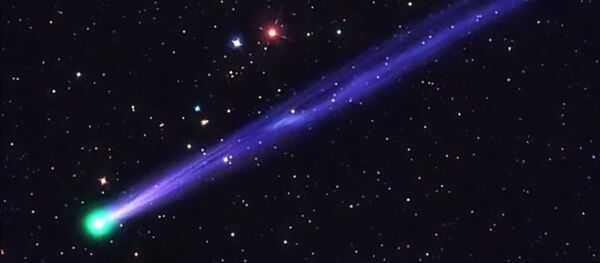The comet will miss Earth by about 13.2 million miles at its closest approach – a hair's breadth by astronomical standards but nowhere close to a collision.
However, the elegantly named 41P/Tuttle-Giacobini-Kresák will be making its closest pass by Earth since it was discovered in 1858, making it visible to stargazers with a small telescope or even a good pair of binoculars.
It will be clearly visible over most of the United States, although clouds may obscure it in the Northeast, Pacific Northwest and parts of the Midwest and Southwest. It should also be visible in the rest of the Northern Hemisphere.
41P, as with most comets, is named after its discoverer. However, it was discovered three times by three different astronomers: the American Horace Tuttle in 1858, France's Michel Giacobini in 1907 and Slovakia's Ľubor Kresák in 1951. Only with Kresák's discovery did astronomers realize that the three comets were in fact one.
41P is also a Jupiter comet, having been captured by the gas giant's gravity. It completes a revolution every 5.5 years, making it visible to Earthlings for a few days. However, it was obscured by the sun in 2011.
The comet glows green because of the presence of diatomic carbon, the same chemical that turns stove flames blue. 41P's biggest claim to fame is its highly variable brightness: in 1973, it was clearly visible in the night sky, its brightness increasing 10,000 times over in just a couple days. Nobody is really sure why this happened, giving 41P an unpredictability that lends well to its nickname of the April Fools Day comet.
Those hoping to catch the comet should aim their telescopes at Ursa Major and the Draco Constellation. Astronomers don't expect it to be particularly impressive, but you never know. It will be April Fool's Day after all.




